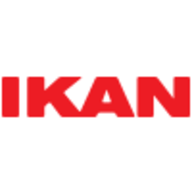

OpenText Application Quality Management and IKAN ALM are application lifecycle management tools. OpenText appears to have an edge with its comprehensive features and integration capabilities, while IKAN ALM is strong in continuous integration and delivery processes.
Features: OpenText Application Quality Management provides robust integration with existing enterprise systems, a wide range of testing tools, and end-to-end quality management. IKAN ALM focuses on automation, facilitating continuous integration, and deployment and release automation, appealing to development teams seeking efficient workflows.
Ease of Deployment and Customer Service: OpenText offers multiple deployment options, including cloud and on-premises, supported by comprehensive support channels. IKAN ALM features a primarily cloud-based, flexible deployment model and is recognized for its responsive customer service. The distinctions lie in OpenText's extensive support infrastructure versus IKAN ALM's agility in deployment.
Pricing and ROI: OpenText typically requires a higher upfront investment with significant long-term ROI due to its extensive toolset. Conversely, IKAN ALM presents a budget-friendly entry point, providing quick returns with its agile features, making it cost-effective for rapid implementation and shorter project durations.
| Product | Market Share (%) |
|---|---|
| OpenText Application Quality Management | 4.9% |
| IKAN ALM | 0.3% |
| Other | 94.8% |

| Company Size | Count |
|---|---|
| Small Business | 39 |
| Midsize Enterprise | 32 |
| Large Enterprise | 161 |
OpenText Application Quality Management offers centralized data management, traceability, and integration capabilities. It aids in handling requirements, test planning, and defect tracking while supporting both manual and automated testing. Challenges exist in deployment and browser compatibility.
Known for its robust reporting and flexibility, OpenText Application Quality Management is tailored for large organizations requiring a comprehensive solution supporting lifecycle coverage and seamless tool integration. Users can consolidate testing processes, manage requirements, and centralize reporting across manual and automated testing. While some face issues with project tracking, outdated interfaces, and limited browser compatibility beyond Internet Explorer, it remains widely used for regression and performance testing. Integration with tools like JIRA and support for tools such as UFT and ALM PC underscore its utility.
What are the key features of OpenText Application Quality Management?In industries such as finance and healthcare, OpenText Application Quality Management is implemented to ensure rigorous testing standards. It supports test case creation and execution, defect tracking, and requirements management. Integration with JIRA and performance testing tools make it suitable for organizations needing synchronized testing environments.
We monitor all Application Lifecycle Management (ALM) Suites reviews to prevent fraudulent reviews and keep review quality high. We do not post reviews by company employees or direct competitors. We validate each review for authenticity via cross-reference with LinkedIn, and personal follow-up with the reviewer when necessary.